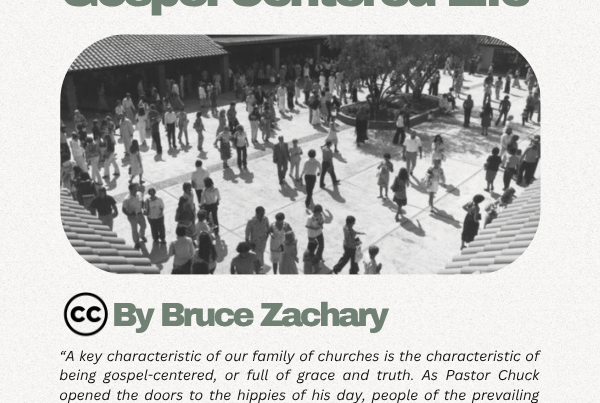
Do you struggle with finding time to spend in God’s presence on a regular basis? If so, you are not alone. Many Christians do not have a daily time of focused, personal worship of God. Some call this daily worship a quiet time, devotions (or devos), the closet, etc. In my experience, although many Christians desire this gracious routine, they struggle to get started. Here are 10 tips to help you get started.
1. Rise: The Morning Calls.
Maybe you’re not a morning person, so let me explain. In fact, I’ll let Psalm 90:14 explain, “Satisfy us in the morning with your steadfast love, that we may rejoice and be glad all our days.” The Psalmist’s joy and gladness all his days is connected to his experience of God’s steadfast love each morning. When we start our day apprehending the truth that God’s Word reveals, we are fortifying our mind (Romans 12:1-2). We are setting the tone of how we will engage with whatever happens in the day. If we begin with hearing God’s message, then we are less likely to be swayed by the billions of competing messages that flood our eyes, ears and thoughts throughout the day. We are also less likely to have that window snatched from us by the competing demands of our busy schedules. In fact, for some of you it may be worth putting that time into your calendar.
2. Ready: Being Prepared Beforehand.
Plan tonight for tomorrow morning. With all the digital screens that are in front of our eyes, we tend to stay up later, thus getting up earlier is more arduous. Try going to bed a little bit earlier, knowing that your alertness tomorrow morning may depend on what you do tonight. Another way to prepare the night before is to prepare where you will have your time of personal worship. If a messy room is a distraction, clean it up the night before. Put everything you need for the morning where you want it. Put your coffee maker on a timer. Do everything you can the night before, so that when you get up in the morning, you can maximize those precious minutes.
3. Recognize: Know who You’re Meeting with
Don’t forget that you are meeting with your Father, King, Creator, Sustainer and Redeemer. The God of gods, King of kings and Lord of lords is welcoming you into His presence. Don’t let the familiarity and convenience of access diminish the magnitude of who you are meeting with. Recognize Him for who He is. To help give perspective here, meditate on Isaiah 6 and Revelation 4.
4. Remove: Things that Distract
It is great having the Bible on my smartphone. But smartphones can be a distraction. If you are tempted to check the news, email or social media before or during your time of personal worship, then don’t turn on your device until after you are done. Use one of those good old-fashioned analogue Gutenberg style Bibles, you know, the kind made out of paper. Also, it is not uncommon for your mind to be filled with thoughts about the things that require your attention that day. Having a pen and notepad available means you can quickly jot those things down, so you don’t have to hold onto them in your mind. You can trust that you will not forget to deal with that thing, project, job because you have made a note of it.
5. Read: Read the Bible
This may sound obvious, but it’s not. Daily devotionals are great. I love reading Spurgeon’s Morning and Evening and the puritan prayers in The Valley of Vision, but they are not Scripture (this also goes for the notes in your study Bible). Do not let a devotional replace your reading of Scripture. If you have time to read one of these, by all means do so, but do not let your reading of the Bible be replaced by reading what someone else has to say about the Bible.
6. Routine: Having a Bible Reading Plan
If you don’t have a plan, you will flip around and dip into passages of Scripture, but never immerse yourself in its life-giving flow. On days that you don’t feel like reading, a reading plan is a healthy discipline. Since the Bible is an unfolding drama, we should have something sequential. You can create your own or use one of the several great reading plans out there. I have used various ones over the years. Currently, I am using The Bible Project’s Reading Plan, and I am loving it!
7. Respond: Pray with an Open Bible
We tend to read, then close the Bible, then pray. Respond in prayer about what you read as you read it. It has been said that prayer is a dialogue, not a monologue. Some of my richest prayer time in the morning is the time I take to pray the Psalms. In the Psalms I not only pray through inspired truth, but I also learn how to pray in any given circumstance as the Psalms are themselves prayers to God.
8. Record: Have a pen and notebook in hand.
To not have this is to say, “I don’t expect to hear anything from God worth writing down.” If my expectation is low, I can trust that anaemic expectation will be met. Let us have a high expectation of a God who desires to reveal Himself, as we seek Him in His Word, as well as ourselves being revealed by His searching Word. A pen and notebook says, “Speak Lord, for your servant is listening.”
9. Realistic: Don’t Bite off More than You Can Chew.
Gung-ho intentions can get the best of us. Remember that we are to grow in these things. Choose an amount of time that is both attainable, but also a challenge. Otherwise, your good intentions will produce an indomitable wall of failure that will leave you discouraged and deflated. Better 15 minutes a day, than zero minutes with the intention of 120 minutes. If you begin with 15 minutes, you can add five minutes, then another five a week later, as you exercise this discipline of grace.
10. Reveal: Share with someone what God is speaking to you.
Let what God is speaking to you bless others. This will both encourage you, as you see God use you in the lives of others and encourage you that God is indeed revealing Himself to you.









